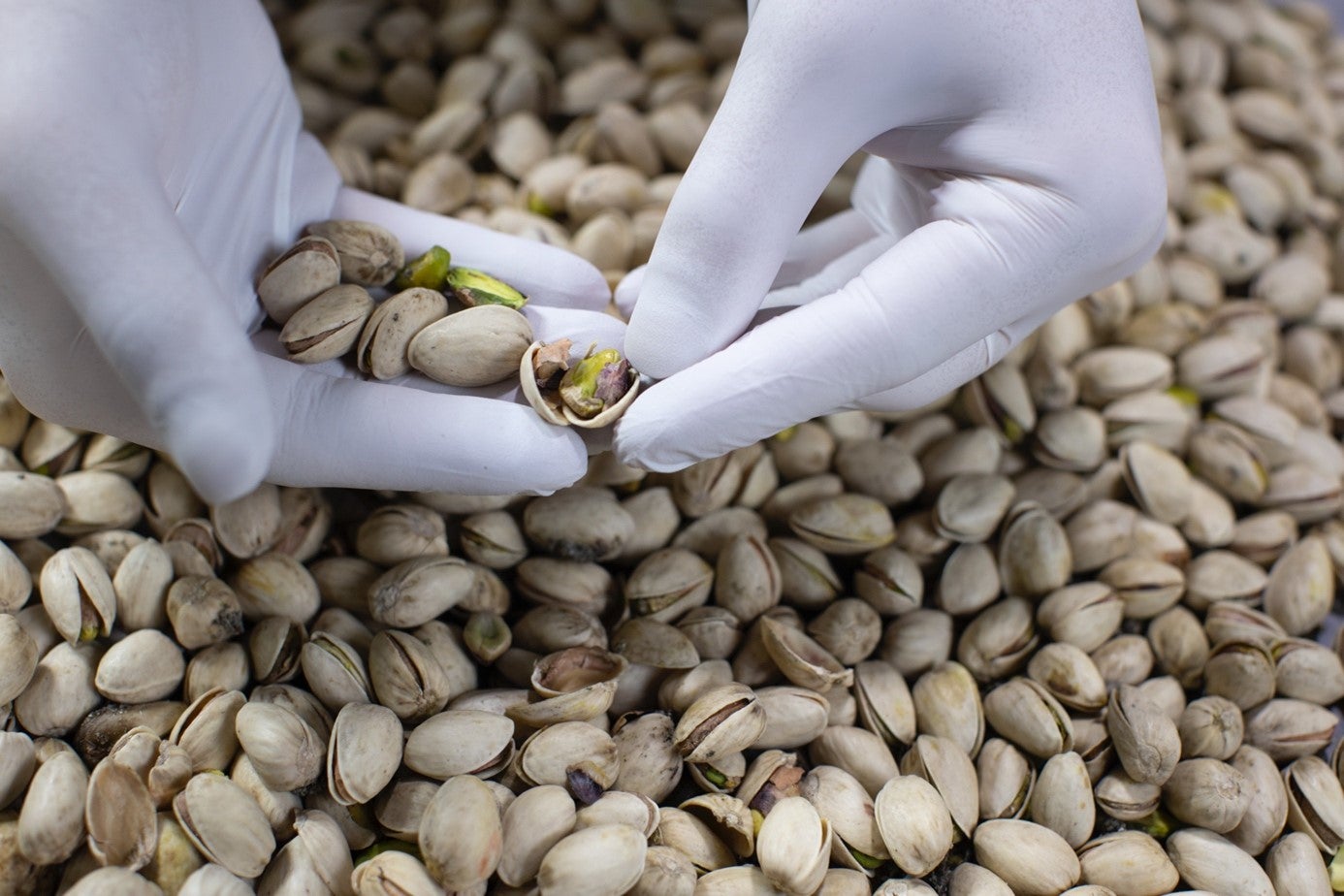
Storing nuts seems a lot easier than it is. Consumers often assume not much can go wrong with nuts, but the reality behind your trail mix is different. Nuts like pistachios are rich in healthy nutrients, but to maintain those qualities, you need to store them under specific conditions.
In this article, we’ll look at pistachios. We’ll dive into the challenges of storing these nuts, and how Modified Atmosphere affects their quality and shelf life.
What’s going on beneath that shell?
Pistachios contain healthy fats, fibre, protein, and a range of essential vitamins and minerals such as vitamin B6, copper, manganese, phosphorus, and potassium. They are also a good source of antioxidants, including vitamin E, and have a low glycemic index, making them a great snack option for maintaining blood sugar levels.
The challenges of storing pistachios in bulk
One of the most significant challenges for pistachios is insect infestations. Insects like the navel orange worm can infest the nuts during the pre-harvest period, leading to damage and spoilage. This is why it’s essential to ensure proper storage conditions that prevent infestations.
Another critical factor to consider is the drying of pistachios. This process is necessary to reduce the water content, which is essential for long-term storage. Without proper drying, the nuts can become mouldy, spoil, and lose their quality.
In addition to insect infestations and drying, shell discolouration during transport and storage can also reduce the value of the pistachios. It’s essential to handle and store the nuts carefully to prevent this problem.
Moulds are another issue that can occur during storage, leading to the growth of mycelium and causing off-odours and mycotoxin production, such as aflatoxin. Proper storage conditions such as low humidity and temperature can help prevent mould growth.
Autoxidation is also a concern when storing pistachio nuts. The degradation of fats, mostly unsaturated fats, can lead to the formation of free fatty acids and rancid odours and colours.
Finally, the biological activity of the seeds can lead to elevated humidity levels and odours during storage. It’s essential to monitor and control the storage conditions to prevent these problems and ensure the quality of the nuts.
Storing pistachios under Modified Atmosphere Packaging: how it works
Modified atmosphere packaging (MAP) can benefit pistachios by addressing several of the challenges associated with storing them in bulk.
One of the most significant benefits of MAP is its ability to prevent insect infestations. MAP involves using a specialized packaging material and atmosphere to create a low-oxygen environment, which can help to deter pests like the navel orange worm.
MAP can also help to prevent shell discolouration during transport and storage by minimizing exposure to light and oxygen. This can help to maintain the visual appeal of the nuts and prevent them from losing value.
In addition, MAP can help to control humidity levels during storage, which can reduce the risk of mould growth and other forms of spoilage. It can also help to prevent autoxidation and the formation of rancid odours and flavours by minimising exposure to oxygen.
Overall, MAP can help to improve the shelf life and quality of pistachios by providing a controlled storage environment, that you’re in control of.
Other benefits of Modified Atmosphere Packaging
Your business, consumers and the environment benefit from Modified Atmosphere Packaging, too. Here’s why:
- Reduced food waste: MAP extends the shelf-life of products, reducing the need for frequent replenishment and, therefore, reducing food waste. Here’s how we prevent waste with Somsix sensors and smart monitoring.
- Increased product safety: By controlling the gas composition, MAP reduces the growth of pathogens and spoilage organisms, making the product safer to consume. All without chemicals.
- Improved product presentation: MAP prevents discolouration, maintains texture, and preserves flavour, improving the appearance of the product.
- Cost savings: By extending shelf-life and reducing product losses, MAP reduces the need for frequent replenishment and associated costs.
- Chemical-free preservation: MAP allows for preservation without chemicals, which is the more sustainable and healthy choice.
- More control over your supply chain: MAP allows for more control over the supply chain, reducing the risk of contamination during transit or storage and enabling faster identification and resolution of any issues.

